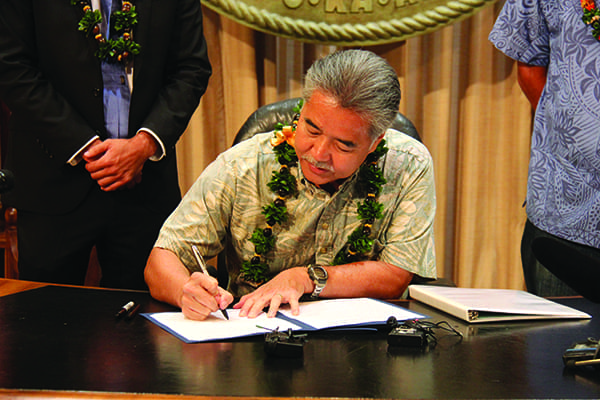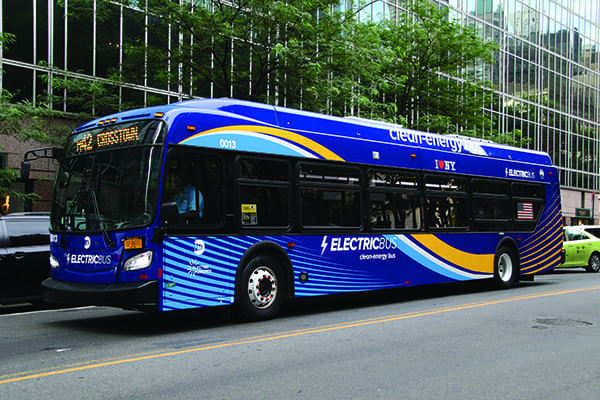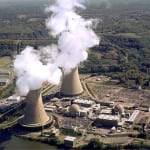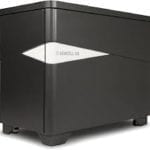More states are setting targets for renewable energy. Cities and counties are joining in. Utilities are formalizing commitments. And economics, as always, play a major role.
The transition to clean energy across the U.S. is accelerating. More than a dozen states, districts, and territories, along with more than 200 cities and counties, have committed to using 100% clean electricity over the next several years.
Utilities have joined the march as well. Duke Energy, Avista, Idaho Power, Xcel Energy, Green Mountain Power, Public Service Co. of New Mexico, and more recently Arizona Public Service are among the power companies that have set clean energy goals.
But setting those goals may be the easy part. Achieving carbon-free targets promises to be more problematic, as lawmakers and regulators become involved in the process of moving away from coal- and natural gas-fired power generation, and toward solar, wind, energy storage, and other technologies. There’s also the question of what’s considered renewable, or clean, and whether nuclear power is part of the equation.
“While present-day utilities have all announced clean energy goals, transitioning from standard practices to meet these goals is a long and arduous process,” said Rami Reshef, CEO of GenCell, a fuel cell development company, in an interview with POWER. “Utilities in most cases by definition are large and cumbersome organizations that face enormous pressure to meet many difficult and often conflicting goals. First and foremost, utilities are challenged to provide their customers with a stable, reliable and resilient flow of power to meet their energy demands at any power level, at any time, and in increasingly severe weather conditions.”
The economics of power generation have been a driving force behind the closure of coal-fired and nuclear power plants, as the costs of renewable energy decline. But expanding the use of clean energy technologies is not without its own financial challenges.
“Utilities must invest significant resources to maintain power generation and transmission equipment and infrastructure for safe operations throughout their long lifetimes and in strict compliance with governmental regulations, while at the same time aiming to keep costs down to minimize electricity rates,” Reshef said. “We need wide-scale investment by the private sector to build out and ensure that the global infrastructure for transmitting and distributing clean energy is stable and reliable.”
Overcoming Obstacles
As states and cities adopt clean energy mandates, it’s clear there are many paths to achieve carbon-free targets, and many issues to be considered.
“Renewables, though growing in popularity, still face major obstacles,” Ken Pedotto, CEO of Solar Simplified, a company that supports community solar projects, told POWER. “Some challenges are a result of economic issues—some cities and states have space constraints that prevent them from being able to physically build new renewable sources. Ironically, states with available space tend to have significantly lower energy costs and thus require subsidies to develop projects or they will not be feasible.”
Those subsidies and incentives, led by investment tax credits (ITCs) at the federal level, are the subject of continued debate. The Trump administration’s fiscal 2021 budget proposes to eliminate several ITCs for individuals and businesses. Though Congress likely will push back against those cuts, clean energy advocates are concerned the current administration’s moves will slow the march toward carbon-free energy.
“The leadership now rests with the states and at the local level,” said David Hochschild, chair of the California Energy Commission, in his keynote address at the InterSolar North America conference in San Diego, California, in early February. Hochschild said, “We have a White House that is in retreat” on climate change, which he called “the greatest issue facing our world.”
“The current administration has attempted to impose regulations that would conflict [with] state clean energy and efficiency policies,” said Pedotto. “Despite this, over 100 U.S. cities have declared they wanted 100% renewables as of 2019. States have taken the lead in mandating their own clean energy goals. Each state is responsible for creating their own implementation plan, just as the governments set the goals and can mandate utilities to comply.”
“The benefit of many technology advancements like renewable energy is that lessons learned in one state can easily apply to an entire region,” Aaron Berndt, head of energy sales partnerships at Google, told POWER. “It is often easier said than done, but everyone benefits when there is a system for sharing lessons and experiences. As an increasing number of local governments establish clean energy targets, tapping into existing resources from states that are further along in the emissions-reduction process will avoid reinventing the wheel when time is of the essence and the climate crisis calls for urgent action.”
Mandates, Goals, and Targets
Hawaii in 2015 passed the nation’s first law mandating a transition to 100% renewable energy (Figure 1), and other states have followed. While some states, such as Hawaii and California, call their legislation a “mandate,” others—such as Connecticut, New Jersey, and Nevada—call their policy a “goal.” Some locales have set “renewable energy” or “clean energy” targets; others talk of “carbon free” or “carbon neutral” initiatives.
 |
|
1. Hawaii was the first state to commit to the use of 100% renewable energy. Gov. David Ige signed House Bill 623, setting a 100% renewable energy goal by 2045, on June 8, 2015. Courtesy: Office of Gov. David Y. Ige / State of Hawaii |
“The trend toward clean energy started in the 1980s, but has really taken off in the past few years,” said Hochschild. He said that with more states and municipalities joining the movement, “[today] 30% of the U.S population is now living in an area with a clean energy mandate. Fossil fuels are alternative energy now; renewables are mainstream.”
Pedotto noted the definition of “clean energy” has a role in how states, cities, and utilities approach their goals. “States should consider expanding the definition of clean energy to include carbon capture, waste management, and more, and expand the reach and investment into the development of those technologies,” he said. Emissions-free nuclear power also sparks debate.
Is Nuclear Power Clean Energy?
“Nuclear should be considered part of an overall clean energy strategy, given the fact that it is a zero-emission product,” said Pedotto. “It protects air quality, has a small land footprint, and produces minimal waste. However, if we begin incorporating nuclear into our clean energy strategy, the issue of nuclear safety and radioactive waste has to be addressed.”
“For me personally, I’m pro nuclear,” said Kathy Hannun, president and co-founder of New York-based Dandelion Energy, in an interview with POWER. “I think if you quantify the risk of nuclear, versus not nuclear, it’s very clearly on the side of nuclear” when it comes to zero emissions. Hannun acknowledged, “I think the downsides [of nuclear] are very real, I just think the downsides of not doing it are also very real, if you’re trying to meet a clean energy target.”
Southern Company, the fourth-largest U.S. utility in terms of market value according to Statista, also looks at nuclear power as important to a clean energy strategy. Southern is building two nuclear units at the Vogtle plant in Georgia, the first new U.S. reactor project in decades. “Nuclear generation must be part of any carbon-free future solution. We are committed to nuclear energy as an integral component of the full portfolio strategy for low-to-no carbon operations,” wrote Schuyler Baehman, a company spokesperson, in an email to POWER. “Coinciding with our construction of the only two new nuclear units in the U.S. in the last 30 years, we continue to leverage the experience and expertise at Southern Nuclear and our R&D [research and development] division to fully explore all potential opportunities within the current nuclear fleet and with advanced technologies including small modular reactors, Gen IV reactors and more.”
Challenges for Utilities
Regional considerations have played a major role in utility adoption of clean and renewable energy targets. Some utilities made their 100% renewable energy pledges after either existing or pending state law would set that requirement. Others were proactive after state lawmakers made it clear they would push for renewable mandates. Now they must accept the challenge of making the goal a reality.
“I think it really depends on the utility, [as to] what the biggest challenge will be,” said Hannun. “The assets that they manage, the challenges they face are specific to their region. Coal is super inexpensive compared to other things for New York utilities, and a lot of heating is done with fuels the utility doesn’t control, but the utility is still mandated to clean up their heating. And in California, utilities struggle with the duck curve, and infrastructure that needs to be upgraded.”
 |
|
2. The electrification of transportation, the No. 1 source of greenhouse gas emissions—power generation is No. 2—is key to achieving clean energy goals. Electric buses, like this MTA bus in New York City, are a large part of the plan in many major cities. Courtesy: Metropolitan Transportation Authority |
“New York is really serious about its clean energy goals, but the No. 1 source of GHG [greenhouse gases] is transportation,” said Hannun, whose company was originally conceived at X, Alphabet’s innovation lab, and is now an independent company offering geothermal heating and cooling systems to homeowners, particularly in the Northeast. “How can New York accelerate the transition to electric vehicles? Electrification becomes the key strategy, whether it’s by electrifying heating or transportation [Figure 2]. And when you look at the [San Francisco] Bay Area in California, you don’t have the hot summers or the cold winters, so transportation becomes the focus.”
Baehman of Southern Company provided details of his utility’s plan, which covers three traditional electric utilities—Georgia Power, Alabama Power, and Mississippi Power. Southern Power, a subsidiary of Southern Company, is a wholesale power provider, which along with its subsidiaries has generation facilities in 13 states.
“On an enterprise-wide basis, Southern Company has set a long-term goal of low- to no-carbon operations by 2050,” Baehman wrote. “On our path to 2050, we have established a goal of 50 percent reduction from 2007 levels in CO2 emissions by 2030. Our strategy to achieve these goals includes the continued development and deployment of a diverse portfolio of energy resources to reliably and affordably serve our customers and communities with a focus on reducing CO2 emissions. Additionally, we work within the regulatory framework in each of our states to ensure that our carbon reduction efforts support customers’ needs and preferences.”
The regulatory framework differs by state and city, and the federal government is looking at new initiatives such as the CLEAN Future Act that will impact how clean energy goals are achieved. Federal legislation also could foster R&D into technologies such as green hydrogen, or natural gas with carbon capture.
“Utilities must carry out long-term investments in technology, policy, infrastructure, and education, both of employees as well as of consumers,” said Reshef. He said new technologies must be explored, including “electricity produced by surplus sun, wind, and hydro power plants stored as green hydrogen that is produced by large-scale electrolysis. In another scenario, this surplus renewable energy can be used to run reformers that produce green ammonia. The green ammonia and the green hydrogen can be stored and used when needed to run fuel cells that generate emission-free electricity.”
Engaging with Customers
Residential electricity customers already are taking steps in support of clean energy and energy efficiency, often partnering with their power provider (see sidebar).
|
A Clean Energy Case Study Kit Carson Electric Cooperative (KCEC), a member-owned electric cooperative headquartered in Taos, New Mexico, has a goal of being 100% powered by solar energy during daylight hours by 2022. KCEC in a document provided to POWER said its “ability to achieve its solar goal and address concerns from its membership were limited by the long-term contract it had with its generation and transmission utility, Tri-State Generation and Transmission.” KCEC pursued an exit from Tri-State in an effort to increase its renewable energy capacity. KCEC, after settling with Tri-State on an exit fee, began a partnership with Guzman Energy, a wholesale power provider, to expand its renewable energy capacity and set a path for approximately 40% lower wholesale rates. As part of the 10-year contract, Guzman financed KCEC’s exit fee and helped KCEC develop a plan to achieve its solar goal and build 35 MW of solar arrays and storage throughout its service territory. The agreement gives KCEC a 10-year, fixed-cost power purchase contract at approximately 15% less than its previous rates. KCEC since beginning its partnership with Guzman has built 16 solar arrays to power homes and businesses, creating what it calls a Distributed Energy Resource grid. KCEC told POWER it recently signed an agreement with a developer to purchase and build two new solar arrays and add 15 MW of storage capacity. Completing those projects will push KCEC past the 35 MW required to meet its 100% daytime solar energy goal (the co-op said that will occur nine months earlier than anticipated) and increase the amount of renewable energy in KCEC’s portfolio to 53 MW, including 38 MW of solar power. KCEC said it expects to see $70 million in cost savings from the program. |
“While some of the most popular avenues to achieving clean energy goals are through wind, solar, and storage systems, there are technologies already in most households that can be used for demand-side initiatives that support these commitments,” said Google’s Berndt. “Devices like smart thermostats offer a way for utilities to engage customers and boost voluntary participation in DR [demand response] programs and efficiency measures. These programs offer incentives in exchange for customer participation.”
Berndt noted several utilities have programs to incentivize efficient energy use by customers. “For example, Duke Energy, the second-largest utility in the U.S., just launched its DR program with Google’s Rush Hour Rewards program. It offers customers $75 just to enroll and pays customers each year they remain in the program,” Berndt said. “In Michigan, DTE provides Google Home Minis as an incentive to enroll in the utility’s DR program called Smart Savers. This model of using voice assistant devices to encourage customer enrollment is expected to expand significantly in 2020. Each of these programs was created and implemented by EnergyHub, a distributed energy resource management company.”
‘Lead by Example’
Nearly 100 U.S. cities have clean energy targets. They run the gamut from small towns, such as Abita Springs, Louisiana, to large cities such as Philadelphia, Pennsylvania; Seattle, Washington; and Los Angeles and San Francisco in California.
State and local mandates are driving the expansion of clean energy projects, but Berndt said industry also can support adoption with or without lawmakers. “It’s best to lead by example,” he said. “When private companies step up and show leadership by investing in renewables and committing to sustainable practices regardless of governmental support, it makes a statement that investing in a clean energy future is non-negotiable.”
Pedotto said investment in energy infrastructure, primarily for transmission and distribution, also will be important to achieve carbon-free mandates.
“Investing in energy infrastructure is crucial for achieving clean energy goals,” said Pedotto. “With investments, the United States will see an increase in jobs, public health, and clean air. All in all, improving infrastructure is an important step to ensure citizens can benefit from the energy revolution.” ■
—Darrell Proctor is a POWER associate editor.










